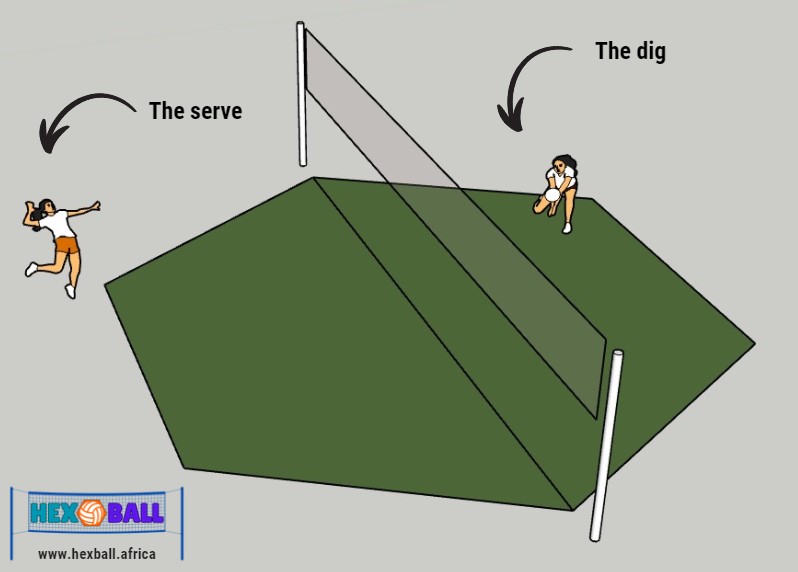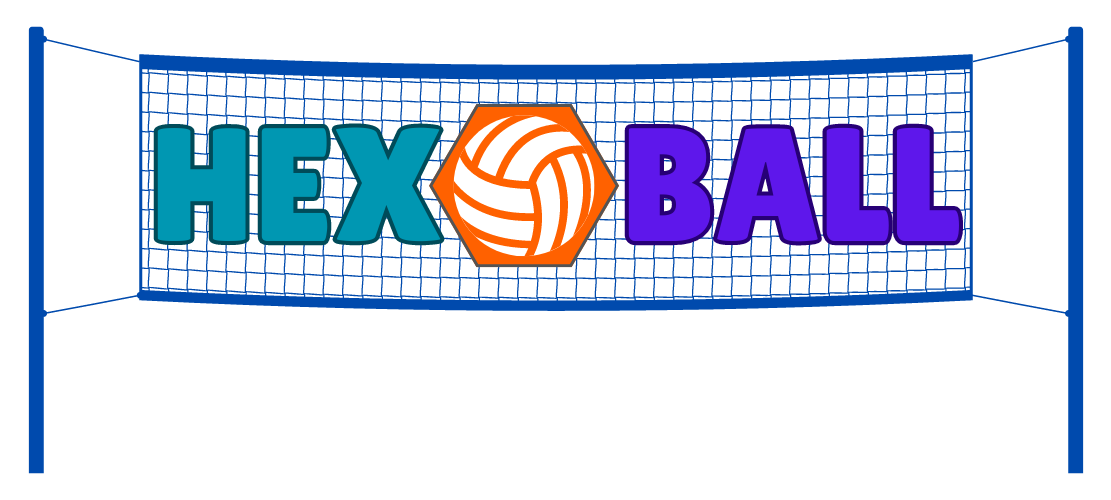HOW TO PLAY
How to play Hexball
A hexball game consists of two teams of two players each, separated by a net.
To start, flip a coin to determine which team serves the first ball. The serve then swaps on every two points scored.
Then the two teams will rally (hit the ball back and forth over the net) until a fault occurs. Each rally is started with a serve from behind the rear boundary line. There is a maximum of three hits (or touches) per side every time the ball crosses the net.
The objective is to score points by sending the ball over the net, grounding it into the opponent’s court, or forcing the opposing team to make an error.
Hexball matches are made up of sets, typically three, but the format can be adjusted according to the playing level and event scheduling demands.
Three-set matches are generally played to 11 points, but again the format can be adjusted based on skill level and scheduling requirements. Each set must be won by two points. When both teams are only two or less points away from winning the set (eg. 9-9 in sets played to 11), the serve swaps on every point.
The first team to win the majority of sets available is the winner of the match. In other words, in a three-set match the first team to win two sets wins the contest.
DIG | SET | SPIKE | REPEAT

GAME STRATEGY (or rather, how a Hexball game SHOULD be played)
The best strategy is to build an attack, by first bringing the received ball under control (a “dig”), passing it in a loop to the other player to set it up (the “set”), and then back to the receiver for an attack, typically at the net with a strong downward hitting motion (the “spike”). The harder the spike, the less time for the receiving team to react, and the better the chance of scoring a point.
For defense, if a strong attack is expected, often the defending player jumps up at the net to defend the spike. This is called “blocking”, and typically there are two channels to block, namely the “line” and the “cross”.
It is a skill to build a proper attack, so at lower levels of play it is often not necessary or advisable to defend with a block at the net, rather staying off the net and on your feet to give yourself time to maneuver.
There is little to be gained by playing the ball directly over on the first touch, and you will hear disapproving calls of “tennis!” if this is your regular strategy. Not only will you probably lose most of these points, it will also make you unpopular with all other players on the court – including your partner.
